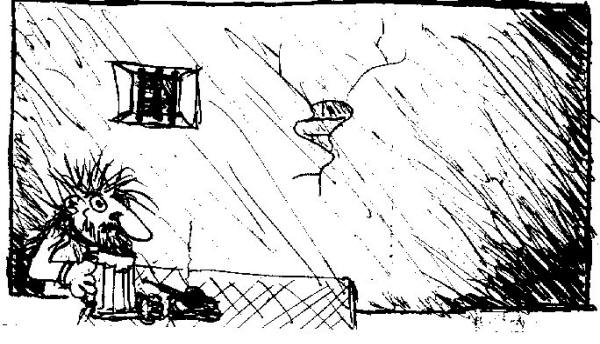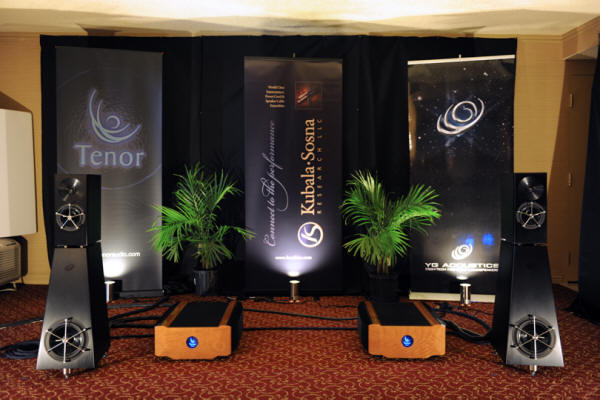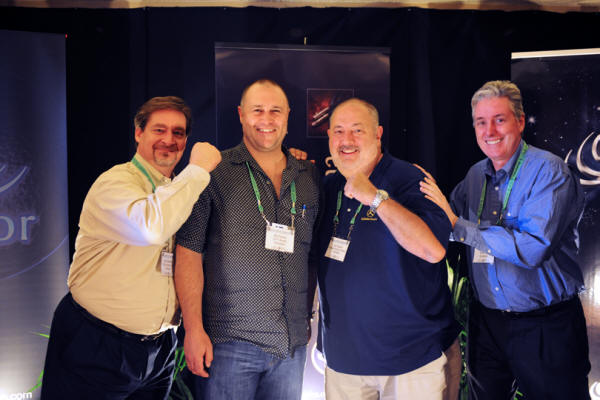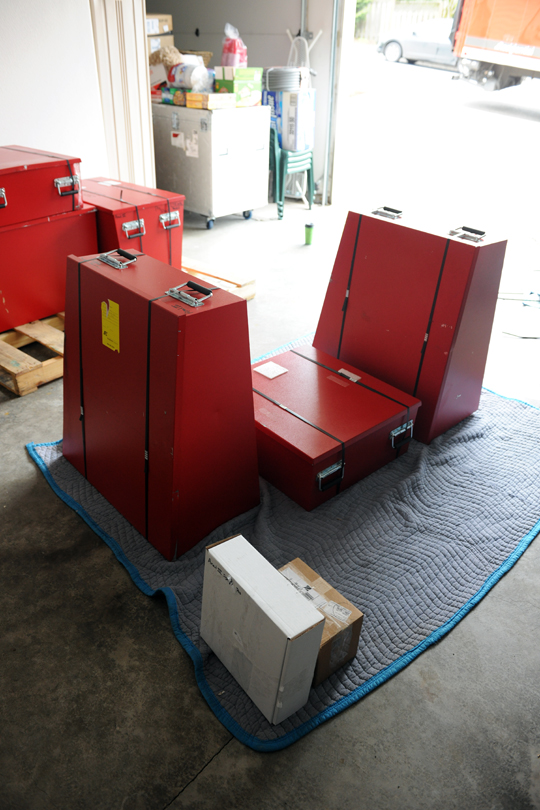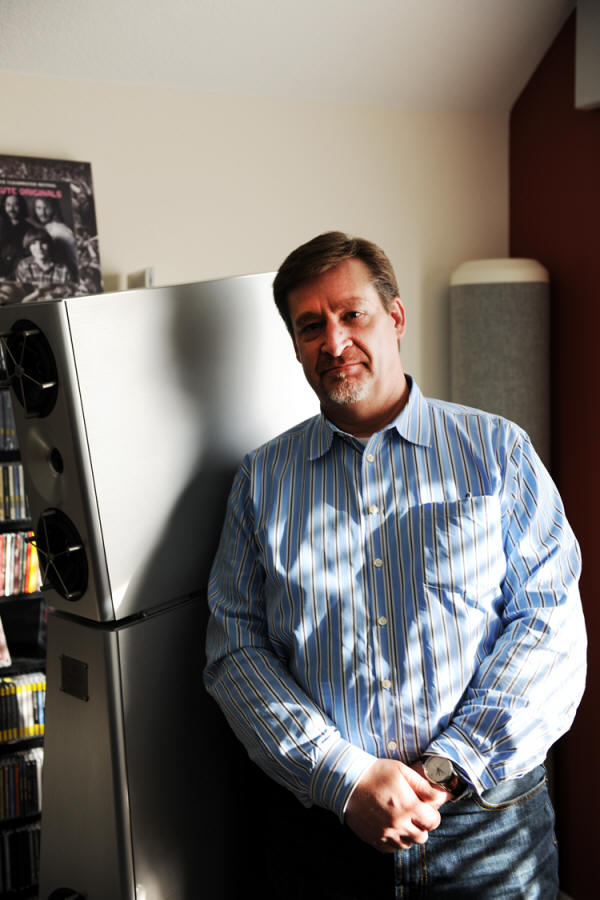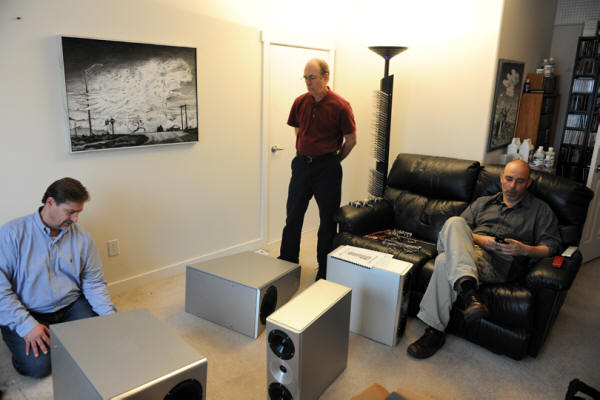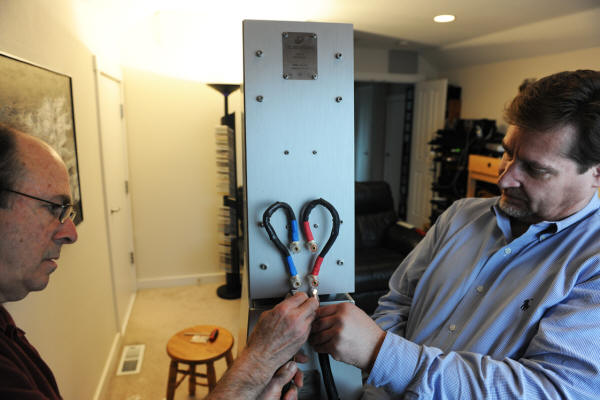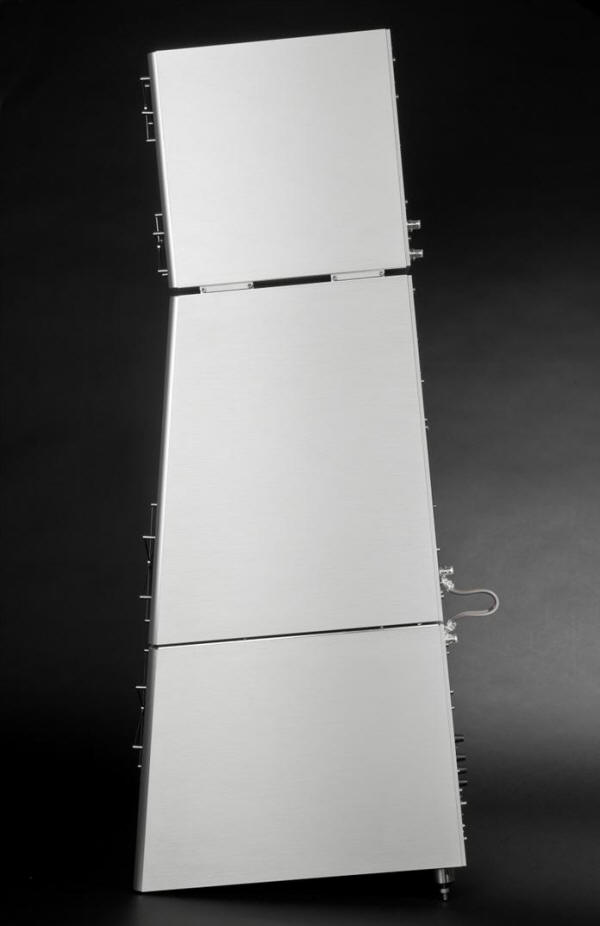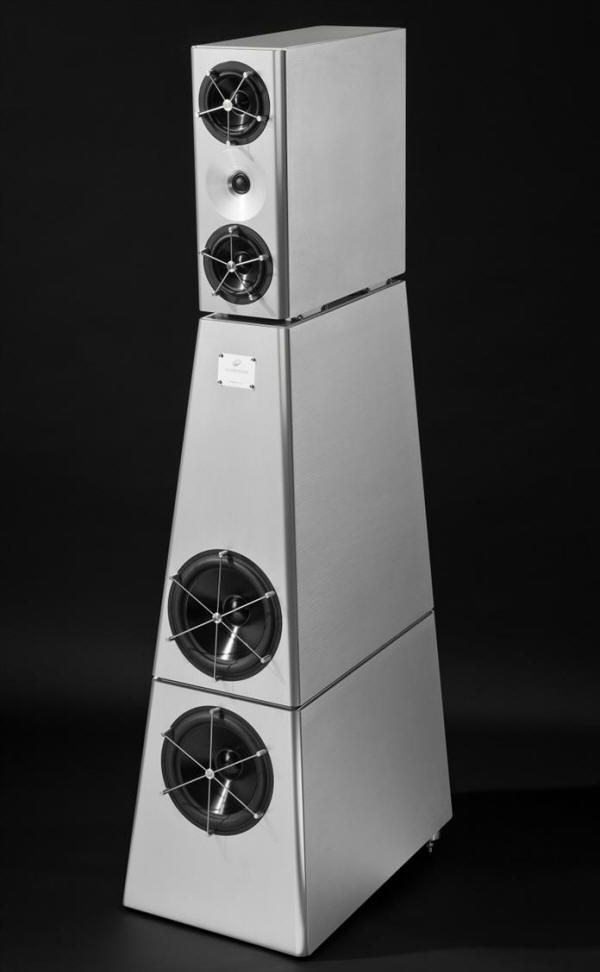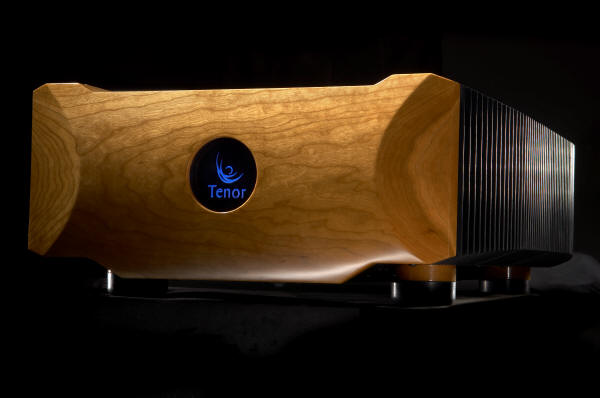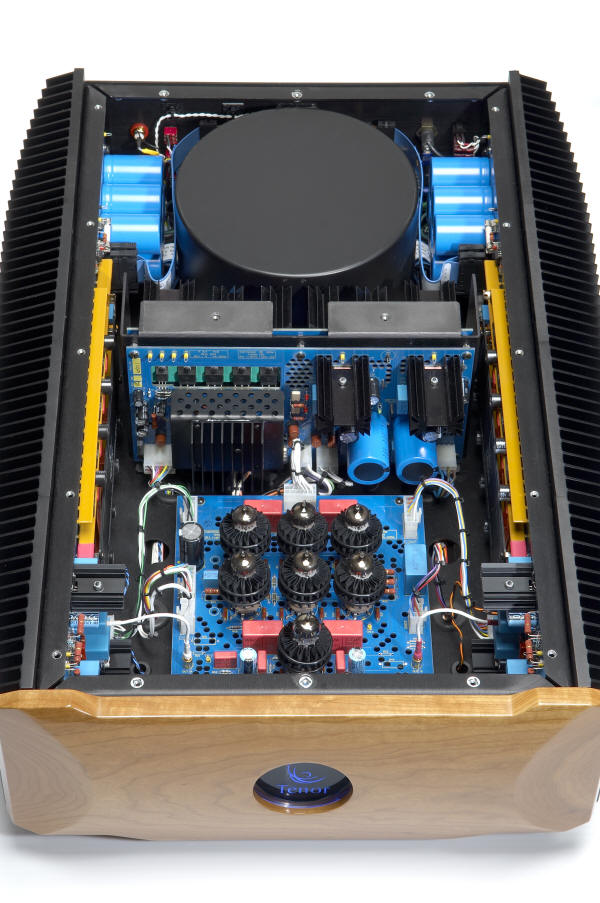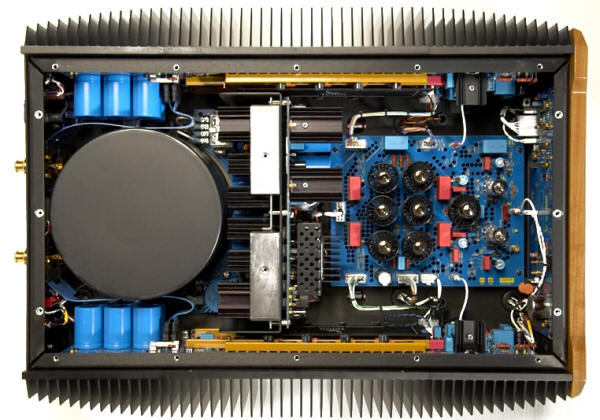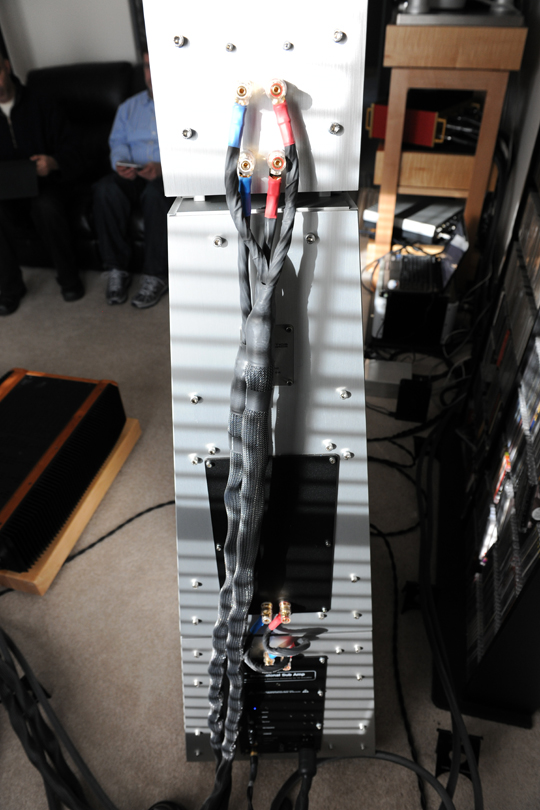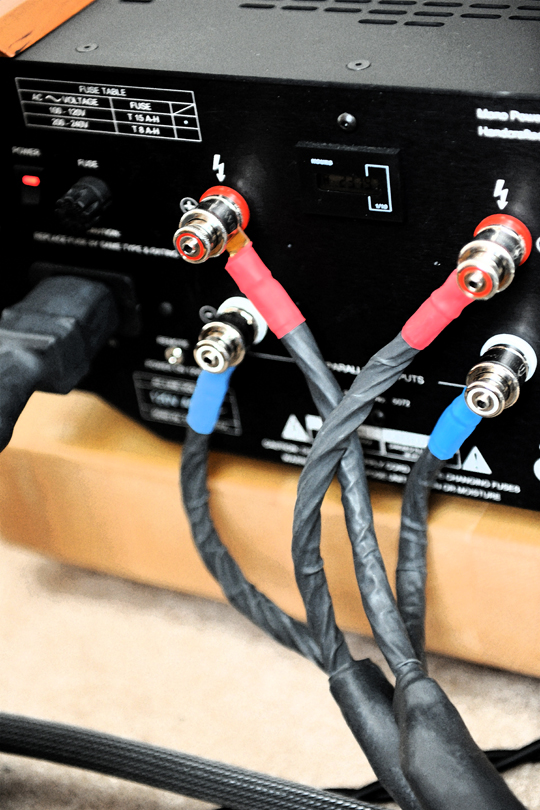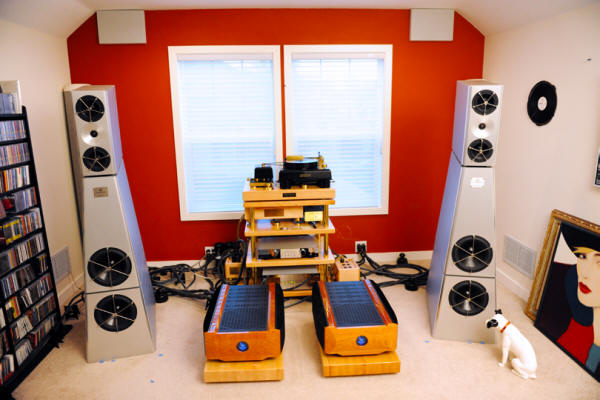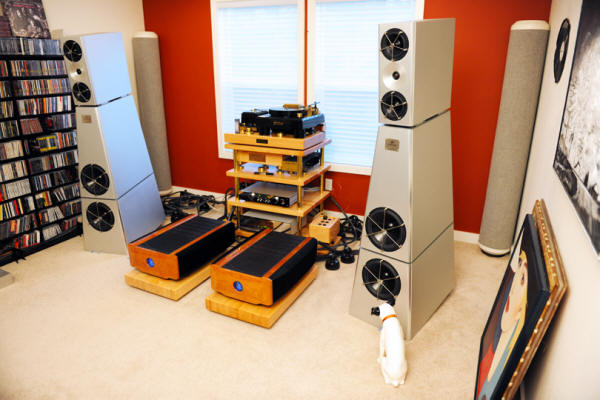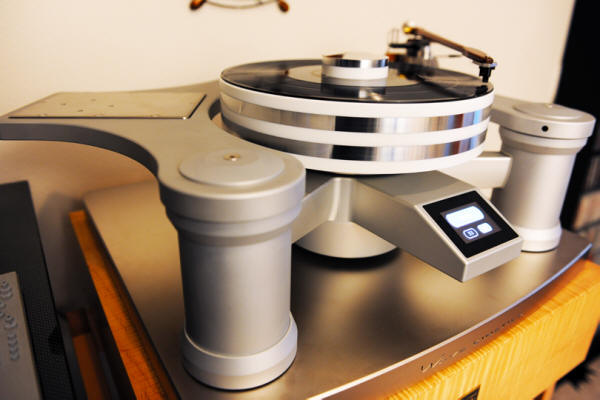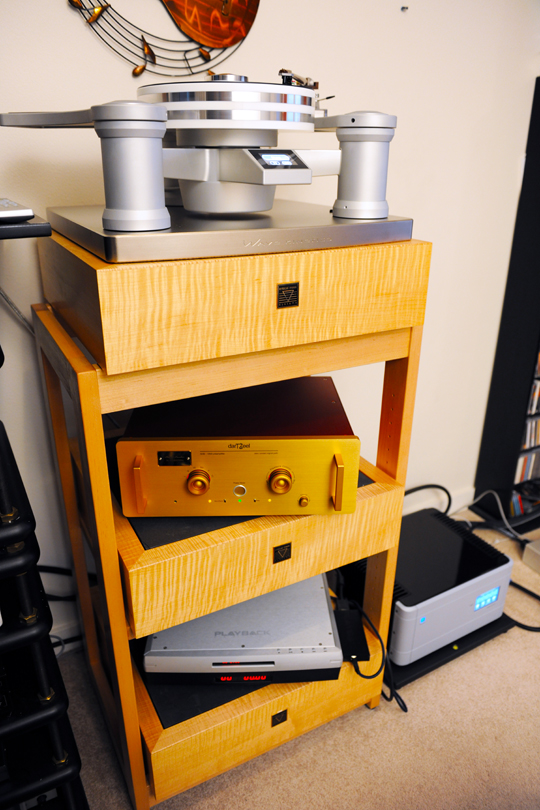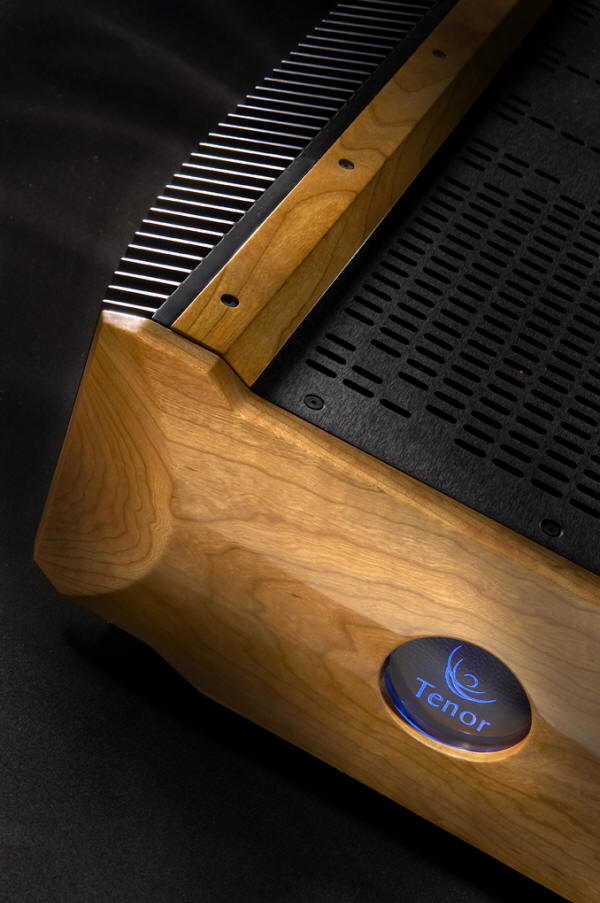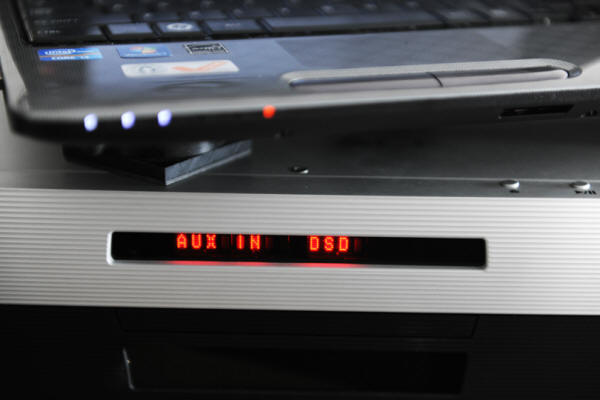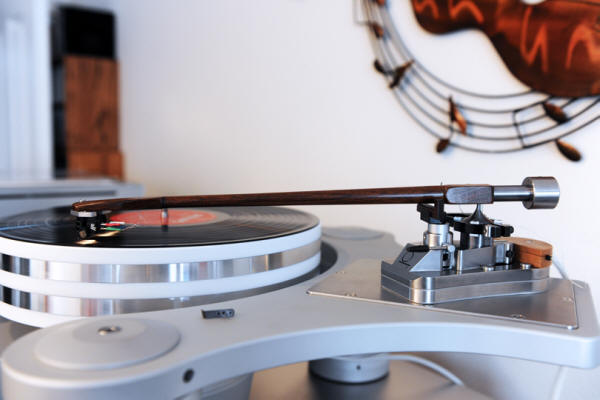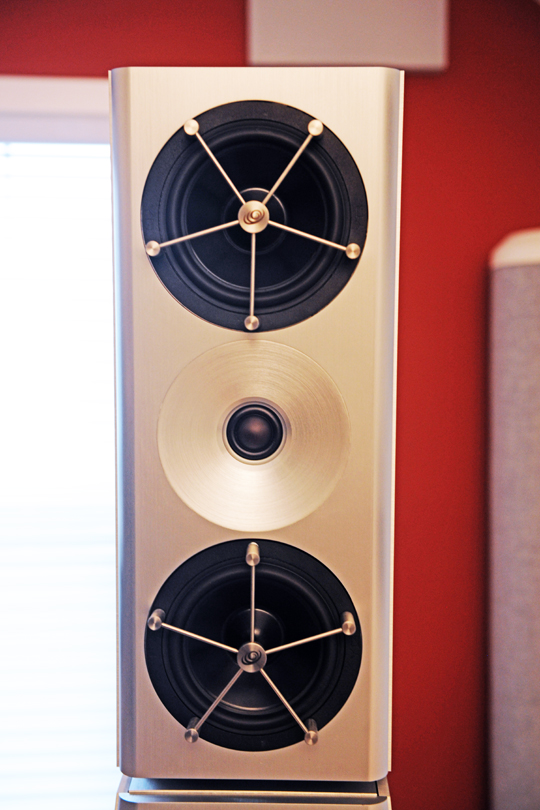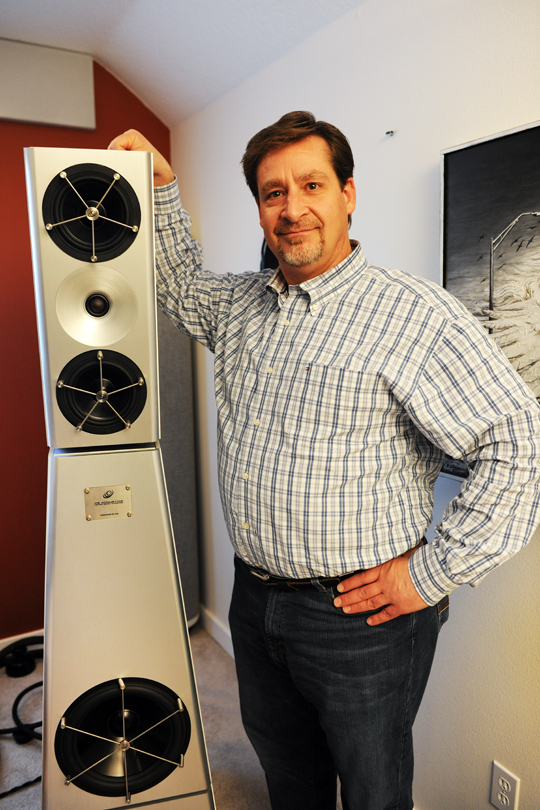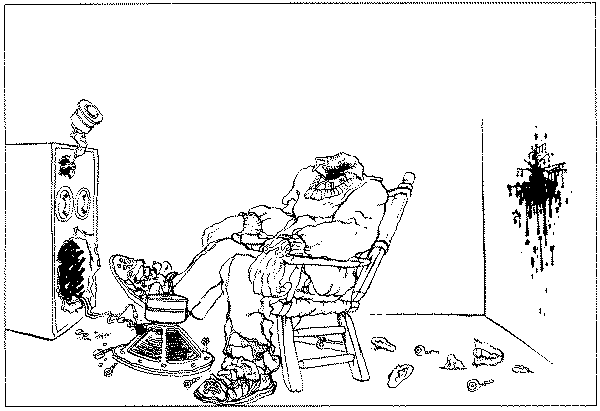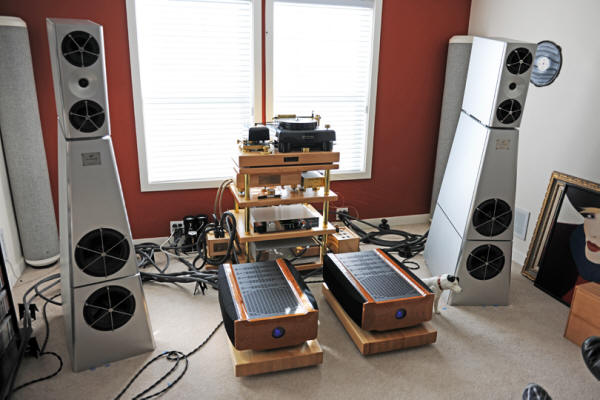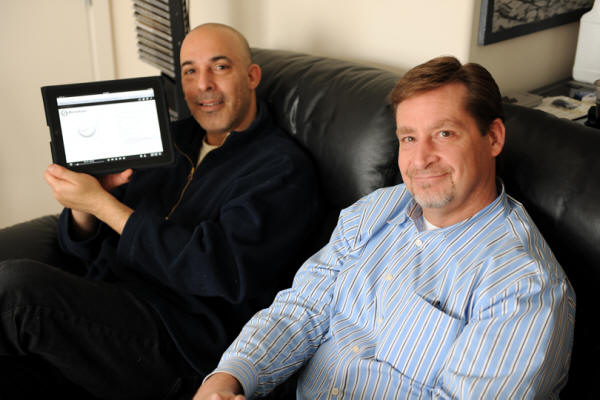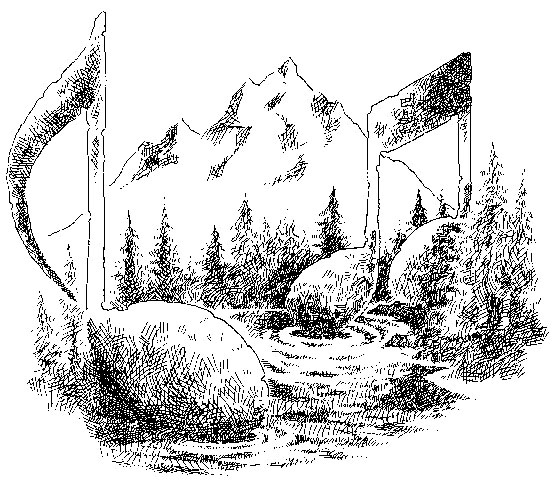|
You are reading the older HTML site
Positive Feedback ISSUE 64
Impressions: In
Praise of Synergy - YG Acoustics, Tenor Audio, and
Kubala-Sosna
[All photographs and image processing by Robinson, unless otherwise noted. Cartoons by Robinson and Walker.]
In which our hero meditates… [Drawing by Robinson, long ago, during a particularly dreadful faculty meeting] Synergy… again…. I am sitting here and musing about audio combinations, and what makes them succeed or fail. For fail, they can, and often do. Audio systems can be mere collections of electronics, electro-mechanical devices, transducers, wood, metal, plastics, insulators, and what-not. Impedances can mismatch; loads can be too much… sometimes in a particular frequency range only. A given MC might be wrong on a supplied tonearm; a stock tube amp or preamp might need the magic that only knowing tube-rolling brings. A system might be crying for a complete tweak job; a certain component may need another 200+ hours before it's really going to come into its own. The cabling in a system might be really and truly wrong for the associated components… but sound wonderful in another system right next door. An entire room may need acoustical treatments, or a re-do of the AC power supply. There are many ways to go wrong. Maybe only a few ways (one way?) to go really right. No plug and play. Nothing is automatic… or if it is, it isn't what it could be. Discouraging, isn't it? Then again, when things go really right, that ava raris, that's worth remarking. Every now and then, I've had a combination in my listening room that makes magic, gets its right, and connects the recorded music with my soul. There's no predicting it; it happens when it happens. I think of the mbl reference system of four years ago… of the Wavac PRT-1 preamp, HE 833 v.1.3 SET monoblocks with the Kharma Grande Ceramiques… of the brilliant Playback Designs MPS-5/USB-X with the darTZeel NHB-18NS preamp/NHB-108 stereo amp with Evolution Acoustics MM2's…of the Walker Audio Proscenium turntable feeding just about anything…ditto the Wave Kinetics/Durand tonearm/Ortofon MC tandem with darTZeel… of Lamm Audio gear hooked up to the Nova Rendition IIs…of the Boulder reference preamp and 2060 stereo amp… lots of memories of good stuff. I'm always looking for great synergies, whether produced by a single company (e.g., mbl), or a combination of firms/designers (Playback Designs/Wave Kinetics/darTZeel/Evolution Acoustics). They aren't easy to find. There are an enormous number of possible combinations of audio components out there, and likewise an awful lot of ways to go wrong. So I'm always a bit surprised, but really pleased, when I find an audio chain that gets it right, and pounds a home run to the bleachers of the musical soul. Which is a segue wrapped inside of a reflection in the middle of a reverie… The parts come together Yoav Geva is a very nice guy, but a driven man. You have to be if your idea of fun is the perfectionistic pursuit of high-end loudspeakers, then Yoav is your poster child. Fashioning precision speaker cabinets out of aluminum is one thing…but milling speaker cones out solid billets of that same material is… well… pretty driven. The idea is clear: aluminum is relatively light, very strong, and thus has some advantages for this application. (For an excellent profile of the YG production process, see Marshall Nack's factory tour in PFO Issue 55) Geva and company have a clear vision of this design approach, and are well down the road in fulfilling it. That alone is enough to draw my interest.
YG Acoustics, Tenor, and Kubala-Sosna in action, THE Show Newport Beach, 2011 I first became aware of YG Acoustics in the iron back in June of 2011. While cruising THE Show Newport Beach, I got to hear the YG Anat IIIs in cahoots with the Tenor prototype preamp, the Tenor 350M monoblocks, and Kubala-Sosna Elation! cables. Hot stuff, and really impressive; see my very favorable mention of this system in my Audio Oasis! awards for that event back in Issue 58. I was able to arrange to get a commitment for the YG Anat III Professional Signature, big bro' to the Anat IIIs, to make a trip to River City. Joe Kubala kindly consented to send along his exceptional Elation! cables to recap the cabling that I had heard there, including power cables, interconnects, and speaker cabling.
Dick Diamond of YG Acoustics, Bill Parish of GTT Audio, Joe Kubala of Kubala-Sosna, and Jim Fairhead of Tenor Audio: The Avengers spring into action! The Tenor 350Ms were not immediately available, but I decided to proceed with the project, using the darTZeel NHB-108 stereo amplifier that we had on hand in our listening room back in River City. I could go with that until I could get the Tenors in the door, I reckoned.
The YG Acoustics Anat III Pro Signatures in their shipping cases…nicely modular. When the YG's arrived, our professional moving crew (Priestly and Sons of Portland, Oregon…great guys who are very experienced ) was brought in to handle the unpacking and setup, under the direction of Dick Diamond. The shipping cases for the Anat III Pro Signatures is highly rational: each of the three main modules (from top to bottom: midrange-tweeter, woofer, and subwoofer section) comes in its own custom-fitted high-impact packaging. This makes palletizing the lot pretty easy; a big roll of pro wrap, and your pallet is done. Taking the pallet apart was a simple task with a box cutter for the plastic wrap, and then our team simply carried each module upstairs without breaking a sweat.
Dick Diamond of YG Acoustics Each section of the Anat III Pro Signature was carefully unpacked in our listening room. The all-aluminum chasses have special precision guide grooves and tongues which allow the speaker modules to slide together.
(Left to right): Dick Diamond and Ron Hedrich of Marigo Audio (a YG dealer) survey the YG Anat III Pro Signature modules, while Jonathan Tinn of Blue Light Audio, visiting during the setup, does his usual iPhone routine. Dick then used custom screws to lock the modules in place quite firmly. Once secured, the three-module Anat III Pro Signature was quite a solid piece of work… no possibility of anything knocking loose.
Ron Hedrich and Dick Diamond complete the cabling of the Anat III Pro Signature with Kubala-Sosna Elation! interconnects to the YG jumper on the back of the MTM module. Then Dick completed the setup by getting the rear spikes in place that tilted the speakers forward slightly towards the listening position, and adjusted the toe-in over the new few hours. He did a great job; the sound locked-in as he got them tweaked into place.
The YG Acoustics Anat III Signature, tiptoed towards the listening position; note the degree of tilt. [image courtesy of YG Acoustics] The assembled speakers were pretty imposing. In fact, Dick had been concerned that everything would fit comfortably when he first saw our reference listening room here, wondering if it would be a bit too small for the Anat III Pro Sigs. Having had a number of large speakers in here, I was not concerned, but I do understand that first impressions can be misleading. Our room here is very well built (a master award-winning "street of dreams" builder here in Portland), has been carefully treated with sonic treatments (ranging from ASC Tube Traps to Cathedral Panels to EMI/RF filters to Stein Music treatments), and has been carefully checked with frequency analysis at intervals. It is very well behaved, with near-flat frequency response from 20Hz – 20kHz, and has been heard by a number of audio reviewers and members of the audio industry. There's a general consensus that this room is a superior sounding listening environment. I'm glad to say that Dick Diamond came to agree with the rest of us about this… but I get ahead of myself here.
The YG Acoustics Anat III Signature [image courtesy of YG Acoustics] The Anat III Signatures represent the top of the line for YG Acoustics. Milled out of solid aluminum, the cabinets are very solid, and the cones for the speakers are stiff, very strong, and yet light…a theoretically ideal set of properties for drivers. The specifications for the YG Anat III Signatures are listed on the YG site. The highlights for me included an excellent frequency response (from a few Hz below 20 to over 40kHz), the fact that phase and time coherency are very fine, and a powered woofer rated at 800 Watts in the Signature model. This is due to the fact that the Signature crossover network is highly tuned to provide the time, phase, and frequency performance that has been achieved. Note that the Anat III Signatures are of moderate efficiency, rated at 89dB/2.83 Volt/meter, so very low-powered amplifiers are not going to be successful matches. You should also be aware of the fact that the nominal impedance of the YGs is 4 Ohms, dipping to 3 Ohms…about this, more in a moment. The Anat III Signatures tip the balance beam at 464 pounds per channel; good thing that they are in three modules for assembly! You will not want to place these in any room with a weak floor, that's for sure. They stand 69" high x 17" wide x 26" deep; think about your listening room space accordingly. [See Dick Diamond's sidebar article for a summary of YG Acoustics' design philosophy.] The impedance question had to be addressed immediately, because the first amplifier that we tried with the Anat III Signatures was the latest revision of the darTZeel NHB-108 stereo amplifier, being fed by our long-time reference standard preamp, the darTZeel NHB-18NS (with two MC sections). The darTZeel is a truly brilliant amplifier, running just over 100 Watts per channel, and has been a champion performer in various configurations here; I didn't think that there would be a problem. Unfortunately, within a little while of firing up our first SACDs on the system, the darTZeel blew a fuse on one channel. Blast-o! Shazbat! Perplexity! And it would do so two more times in the next several hours, to my amazement. Clearly something was wrong. Dick Diamond was able to tell that the speaker setup was correct, and left Portland to return home. I was left to solve the issue of amplification for the YGs. It was time to huddle with the experts. Discussions with YG Acoustics on one side, and darTZeel on the other, together with a perusal of the impedance curve of this particular pair of speakers (YG very intelligently keeps the analysis of each pair of speakers on file), revealed that the nominal 4 Ohm impedance dipped to 3 Ohms over a significant portion of the frequency range that music lives in. At the suggestion of Hervé Delatraz, the creative guru at darTZeel, we tossed the internal switch from high to low impedance. According to Hervé, this was the first time that the NHB-108 ever needed to use the low impedance setting with a speaker. But he was right; this took care of the problem… no more popped internal fuses. I mention this so that you're aware of the fact that the Anat III Signatures really do need an amplifier that's comfortable at 3 Ohms. And, depending on your room size, taste in music, and requirements for volume, you'll probably be happier at 200 Watts per channel and above (more is definitely better here) than 100 Watts per channel or less. For me, even with the low impedance setting handling the load well, the darTZeel NHB-108 stereo amp didn't provide quite enough power to really make the Anat III Signatures bloom fully. So, what to do? Since I had first heard the YGs in conjunction with the gorgeous Tenor 350M monoblocks and Kubala-Sosna cables, I decided to try this chain again. Fortunately, Jim Fairhead at Tenor was willing to get us a pair of their 350M monoblocks ASAP…good man, Jim! Dick Diamond was sure that this would resolve any horsepower issues. [See the sidebar article from Jim Fairhead for Tenor's design philosophy statement.]
The Tenor 350M hybrid monoblock [image courtesy of Tenor, Inc.] How could it not? The Tenor 350Ms are beautiful to behold, but underneath the glamor is a potent beastie. The 350Ms are a hybrid design, with tubed input and solid-state output. Rated at 350 Watts per monoblock at 8 Ohms, and 700 Watts per at 4 Ohms, with a frequency range of 3Hz – 200kHz plus/minus 3dB, I wasn't concerned about power or frequency range for this project. (For the 350M product specifications, see the Tenor documentation.) I wasn't concerned, though; I had heard the results in a much larger room that The Show Newport Beach 2011. No sweat!
The gorgeous Tenor 350M hybrid amplifier, showing off her internal layout [image courtesy of Tenor Audio]…
…and from directly overhead [image courtesy of Tenor Audio]. Joe Kubala of Kubala-Sosna agreed to send some additional Elation! cabling to allow us to connect all the parts and pieces with his best stuff. Since Jim had a special way that he recommended we handle the bi-wiring to the 350Ms, the extra Elation! would allow us to get the job done. I placed the Tenor 350Ms on my Walker Audio Prologue amplifier stands, which was a good pairing... the Walker Audio stands produce a sound that is quick and very clear, a nice foundation for the hybrid 350Ms. My trusty reference for preamps, the darTZeel NHB-18NS, was linked to the 350Ms via the extra-length Elation! XLR cables that Joe Kubala had sent to me. (A shout out to Joe!) I then connected the speaker cables to the rear of the YG midrange-tweeter module on top:
You'll notice that the Kubala-Sosna Elation! cables both went to the top midrange-tweeter module. The subwoofer section on the bottom was fed via a custom JENA Labs Twin shielded unbalanced cable directly from the darTZeel NHB-18NS preamp's unbalanced output. The subwoofer then cascaded the signal through the crossover to the woofer section above it via jumpers, as you see in the photograph above. (The stock YG jumpers that you see were replaced later with Kubala-Sosna jumpers.) The unusual element of this hookup took place at the other end of the speaker cables. Jim Fairhead of Tenor sent along directions for the connection that Tenor recommend, which led to a cable configuration that looked like this:
Instead of bi-wiring in vertical sets (L and R, plus/minus), Tenor recommended that I do a lateral bi-wire, with the plus of L being combined with the minus of R, and the plus of R paired with the minus of L. This would produce the best sound in our configuration, they assured me. I followed their directions carefully… I assume that the manufacturer knows what it is doing! The results were certainly amazing.
Once everything was buttoned down with the Tenor 350Ms and the new Kubala-Sosna Elation! cables, the results looked like this. You can see that the speakers are fairly close to the side walls, and are out into the room perhaps three feet or so. Dick Diamond had been somewhat concerned that this would not be enough elbow room for good sound, but based on my more than twelve years in the space, I was confident that this would work.
I was right. As the system broke in over the next several weeks, the results were at first very encouraging…and then much more than that. The main sources used during the six months that this system was in place included:
The turntable for this project: The Wave Kinetics NVS direct-drive turntable with the 12" Durand Telos tonearm and Ortofon A-90 MC cartridge.
Below the NVS turntable was the darTZeel NHB-18NS preamp with double MC section; on the bottom shelf was the Playback Designs MPS-5 SACD/CD/DSD player, with USB interface. To the right is the PS Audio P10 line conditioner. I would consider these to be first-rank components, which would put the rest of the system through its paces. I'd definitely be able to assess whether or not the combination of YG Acoustics/Tenor/Kubala-Sosna likewise belonged in the first rank of what I've heard in my listening room. The Sound
The Tenor 350M monoblock amplifier [image courtesy of Tenor Audio]. Certainly the sources that I was using for this project were up to the task. The Playback Designs MPS-5/USB-X remains the best that I've heard in SACD and DSD playback…CDs too, for that matter. Its performance with DSD and Double DSD files is absolutely the best that I've heard. (Yes, you can take that to the bank.) We were able to use a number of DSD files while the review system was in place, which helped us to use source files of the very highest quality over time, directly from hard disk via USB 2.0, with the beta version of the Emotion Media Server from Pyramix. Exceptional sound! And the NVS/Durand/Ortofon A-90 combination for LPs was only bettered when the Ortofon Anna MC came along. (That's a great problem to have, by the way.)
And so, for about six months, I was immersed in the audio field of this system, day-in and day-out. It was a thought-provoking experience, because the nature of the synergy that emerged was unique. It has taken me a while to come up with the language to express what this system did for me… let me see if I can develop it for you. Ultimately, all audio evaluation comes down to the question: How did it sound? Yeah. That is a good question, and none the worse for being obvious. First of all, some might expect that a loudspeaker that is made mainly out of aluminum couldn't have richness of soul, and would have to sound "metallic," tinny, beamy, nasal, thin, sucked-out. Aluminum drivers, right? Gotta sound like… well… metal. In my own room, I found that nothing could be further from the truth. On the contrary, the YG Anat III Signatures, with the darTZeel preamp and Tenor 350Ms were not "metallic" sounding. In fact, when I closed my eyes, I had no clue that the YGs were "metal" at all. The character of the sound was detailed without being etched or forward in any discernible way. Frankly, I was surprised that I didn't hear at least some of that, right out of the box, but it simply wasn't there. The main effect of the aluminum drivers powered by the Tenor 350M's was to impart a truly remarkable quickness to the sound, enhancing the transparency of the reproduced sound. If you've been following my reviews over the years, you'll know that I have come to value transparency over all other audio virtues. I think that all of the other virtues are revealed only to the extent that the system steps out of the way (transparency) and allows them to become clearly evident. The quickness of the system… DSD or quality LP signals going via the darTZeel NHB-18NS, the most transparent preamp that I've heard in my room… was evident in the big-time jump factor that was in play. Great SACDs like the Blue Note series from Analogue Productions (any of them… got a huge stack of them…take your pick!) via the Playback Designs MPS-5 were fast, clean, clear, and without any transient fuzziness or smearing. When a brass note was blasted, or a bass string plucked, or a snare struck, or a cymbal popped, the resulting sound was there. Just there. Timbral quality was also striking. For example, Top Music's SACD Joe Weed and the Vultures (you do have this SACD, don't you?) via this system was spot on for the growly tone of the guitars, the feel and attack of strum ‘n pluck, and the poppa-poppa of the bongos. Not to mention the sweet sound of the accordion! As a guitarist, I can say that there's a fine balance between getting the transients on strings right, and making them glassy, harsh, or edgy. There are too many poor recordings of guitars, and too many systems that just don't get this right. Especially with this recording, which is quite revealing of the sound of the guitars, mandolins, and a really sweet dobro, being able to enjoy the clean sound without a headache, was a great experience. Excellent for tone on this ultra-fine SACD, PCM in the processing and all. Ditto on the LP of Nat King Coles The Very Thought of You. Would I hear the lushness of the Capitol strings, that "Capitol sound" that we know so well, or would it go steely or "edgy-and-in-your-face"? I'm relieved to report that the YG/Tenor/Kubala-Sosna did very well with this LP, and with the superb reissue of this title on SACD from Analogue Productions. Smooth sailing. The integration of the drivers was really seamless, which is a major compliment to the Signature crossover in the YG Anat III. Normally, with a tall array like this one, and a relatively short throw range to the listening position, I would expect that I would be able to pick out the drivers, to one degree or another. I was not able to do so; with closed eyes, the high and low frequencies integrated with the midrange in an organic way. The music was one, a continuous presence. Phase and time alignment was exceptional, something that YG prides itself on. The effect of good linearity in these domains is in the precision of imaging and soundstaging, assuming a well-done recording in the first place. (Big assumption, that! Have Clark Johnsen talk to you about this one.) Naturally, with SACDs and LPs, it was pretty easy to see whether or not some reference discs were sounding good or not. My 45 RPM LP of The Weavers: Carnegie Hall, 1963 has seen serious service over the years. It gives you such a sense of the stage presence of Pete Seeger and company all these many years later, and "Guantanamera" remains a personal favorite of mine. It's haunting to hear the spread of the performers from far left to far right, have a sense of fullness in the middle, and feel some depth too.
The lovely…and lovely sounding…Durand Telos 12" tonearm, outfitted with the Ortofon A90 MC cartridge, on the Wave Kinetics direct drive turntable. Hearing it over this system was a treat: imaging and soundstaging were solid and definite. I found the same thing to be true with other recordings: e.g., the MoFi SACD of Ellington's Blues in Orbit, or the RCA Living Stereo SACD of Rhapsodies by Stokowski and company to be exceptionally well rendered, turning "soundstage" into something more like "soundfield." In this, I know that the darTZeel NHB-18NS preamp was performing its usual feat of scary transparency, helping the rest of the audio reproduction chain to perform at this level. (I know this because I've heard the darTZeel do this in other combinations in our room.) Select favorite soundstaging recordings SACDs and LPs from RCA Living Stereo, the Sony catalog, Pentatone, Harmonia Mundi, Proprius, Opus3, and First Impression Music all confirmed that with reference-quality recordings, the system soundstage depth was well behind the back wall, and extended from nearly hard-left to nearly hard-right. Nice! As to the frequency performance in various ranges, the YG/Tenor/Kubala-Sosna/darTZeel mix was very impressive. The high frequencies communicated via the YG ForgeCore™ tweeter were definitely extended quite nicely. YG's tweeter is a silk dome. According to Dick Diamond, the ForgeCore™ tweeter has a unique in-house machined internal structure that reduces distortion to vanishingly low levels. It was very quick, added air and ting without zing, and sounded well balanced with the other drivers. I paid particular attention to the tweeter, since it is very tricky to get right, and to find the right fulcrum point with mids and bass. At first I wasn't sure, but over time…and with a variety of SACDs and LPs…the higher frequencies were confirmed as being right in the blend of the drivers.
The MTM array of the YG Anat III Pro Signature: Aluminum drivers all, in an aluminum enclosure…and no "metallic" sound at all…. The midrange section of the MTM module was really delicious. The dual BilletCore™ mids were very coherent and direct, delivering this zone of the music with convincing tonality and precision. There was no tonal overhang here: the mids were (like everything else with the Anat III's) quick. No slows, no fuzzies, no sense of the midrange being out of kilter with the neighboring ranges. The music was round and right here, and had a truly convincing sense of immediacy that I really enjoyed. Aluminum drivers, eh…?! On the bass side of things, the YG/Tenor/Kubala-Sosna/darTZeel excelled in tight control and laser-like speed. The dedicated 800 Watts per channel on the subwoofer section in the Anat III Pro Signature made for exceptionally tight, fast bass that never got tubby, wooly, or boomy in our room. The bass is simply there; it doesn't roll around on the floor, or punch you with excess. I attribute much of this to the signal chain, though I must also say that Dick Diamond did a superior job of setting up the speakers. This is a critical factor; in any given room, there is going to be a "best location" for a pair of loudspeakers, especially for proper bass response. So it was here. Placement was tweaked carefully into place, and evaluated each step of the way. In a moderately-sized room like this one, there isn't a giant zone for speakers to noodle around in…in fact, I generally have a good idea of approximately where they ought to be. After two days of work, starting from my suggested starting point, Dick completed the work to his (and my) satisfaction.
Dick Diamond with the YG Anat III Pro Signature during the dialing in of placement. The results for bass were notable, and of the character that I've listed above. For example, I often use Top Music's tasty SACD, Break-In, for doing exactly that, but also to assess the depth and roundness of bass response. This SACD has an effortless and deep drum bass sound that is quite remarkable to hear…Top Music has a real winner here. The outcome in this system was very satisfying, with the ultra-low drum sound rendered with exceptional body and presence. The results were likewise excellent with my SACD of Joe Satriani's Engines of Creation. The sixth track, "Champagne," is a great song for the stretching of a system to its depths. The YG/Tenor/Kubala-Sosna/darTZeel passed this test with flying colors. The extremely low bass notes from the synthesizer keyboard were handled with aplomb, with no sign of speaker stress of amplifier overload/clipping, even out to 103-105dB. I finally got to the point where I applied one of my acid test SACDs for deep bass: Spitball's Pop Condition. Warning: this disc is NOT for those of you who like chamber music, elegant and refined female jazz vocalists, or Kenny G. This is European techno-pop at its most dynamic, in a DSD recording. This one's more like a Bart Simpson "Cowabunga!" SACD. Pure unobtainium; you can't get it anywhere that I've been able to find these days. But yours truly does own a copy of this SACD, with its first track, "Underestimated." This song has some terrifying slide runs of synthesizer bass that whoosh like a Star Wars Tie Fighter down into the subterranean realms of bass response. In fact, this is one of those discs that—like the legendary Telarc 1812 recording—should come with a warning sticker. "Dude! DANGEROUS bass! Play at very reasonable volumes!" Otherwise, you know what will happen…
Yep. That's right. Anyway, I finally ran "Underestimated" (prophetic title!) past this system, being very careful with the volume initially. Low volumes seemed fine, and so I slowly cranked it up to about 95dB max. Lordy! The review system took it just fine, though I wouldn't want to answer for the speaker drivers if I were to take it much higher than about 100dB. The bass here remained tight, clean, and unstressed, again with no audible or visual sign (the Tenors will let you know if you're being stupid) of amplifier clipping. OK, so I was impressed once more. I guess that it's no surprise that dynamics were also outstanding. Regardless of the recording that I used, I found that this system never lacked for slam, dynamic range (from ultra-quiet to explosive), and for detail withal. The recordings that I cited for the bass in the section above could be repeated here; the same recordings that tended to show off the deep bass, quite often also demonstrate system dynamics. For example, a particular favorite of mine over the past couple of years has been the exceptional 2L SACD of Edvard Grieg: Piano Concerto. I won't tell you the secrets behind several aspects of this recording…let's just say that you'll be haunted by how this production was put together. While Grieg's well-known Piano Concerto in A minor is a fantastic delight for the ears, with excellent dynamics, it's actually the lesser-known "Wedding Day at Troldhaugen" that captured my heart. I've listened to it again and again. What a brilliant and highly dynamic recording! It captures the dynamic range of the piano so convincingly, that you're drawn in by the life-like effortlessness of the reproduction of the music. Splendid in every way! I also used another favorite of mine, the Proprius SACD of Cantate Domino to check out the dynamics of the organ and human voice. This recording has been known and loved for many years by audiophiles who are smitten by its superb performances and the simple, direct quality of the audio engineering. Two of my favorite tracks, "Stille Nacht" and "Julsang," allowed me to sense the dynamics of massed voices in the choir, as well as the weight and presentation of the church organ. The results were every bit as good as I had hoped. The choir was presented with clear detail, and commendable dynamic authority as the forte passages appeared, with no congestion or forwardness. Concluding Reflections…
Synergistically, there is no doubt that the YG/Tenor/Kubala-Sosna/darTZeel set worked and played well together, with either the Playback Designs or Wave Kinetics/Durand/Ortofon reference sources. At no point did the somewhat demanding load of the YGs ever cause the Tenors to tap out, whether by DSD, SACD, or LP.
Jonathan Tinn and Dick Diamond enjoying the sound of pure DSD on the YG/Tenor/Kubala-Sosna/darTZeel/Playback Designs chain, courtesy of the DSD/Double DSD-capable iPad-controlled Emotion Music Server beta from Pyramix. They simply supplied all the power necessary, without clipping at any point. Note that there were a few times that I took the system to the 103-105dB range, just to exercise the drivers. In my room, that is definitely loud. Not a problem with these components, though; they simply bloomed, enveloping me, instead of getting harsh or in-my-face. The darTZeel NHB-18NS preamp is an extraordinarily clear world-class component… quite transparent… and so any weakness downstream would have been laid bare. I didn't hear any. Instead, the simple authority of this system was made manifest. In fact, as I sit here and think about the YG/Tenor/Kubala-Sosna/darTZeel chain, this notion of "precision" comes back to me. The clarity and transparency, fused with the power and control of this system, provided a sense of naturalness and ease of musical presentation that is a hallmark of the truly great components and system synergies that I have known.
Final thoughts? Well, the combination of the YG Acoustics Anat III Signature with the Tenor 350M hybrids, hitched up with the Kubala Sosna Elation! cables, and fed by the Playback Designs MPS-5 and Wave Kinetics/Durand Telos tonearm/Ortofon A90 MC produced one of the very few systems on the planet that is in the exalted category of "first rank" in my listening room. I have only known a few (far too few) systems that occupy this place… most fall short, and disappoint noticeably in one way or another, or require a more judicious evaluation clustered with conditionals… but given my extended listening to this design, and the exceptional results, I must now add this extraordinarily synergistic tandem to the exclusive group of the five best systems that I've had in my listening room over the past thirteen years. And that, my friends, is very high praise indeed. Component pricing: contact the manufacturers or their distributors for current pricing and availability of all products in this essay. Manufacturers
YG Acoustics LLC
Tenor Inc.
Kubala-Sosna Research LLC Inquiries about Playback Designs, Wave Kinetics, Durand tonearms, and Ortofon MC's should be directed to:
Jonathan Tinn,
Blue Light Audio Other key products mentioned in this essay:
Walker Audio
PS Audio
|

